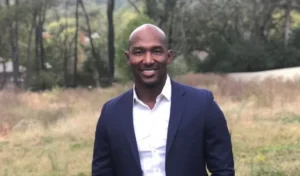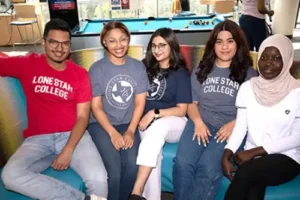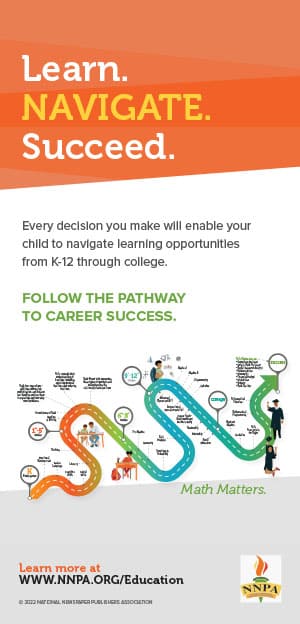“An individual who breaks a law that conscience tells him is unjust, and who willingly accepts the penalty of imprisonment in order to arouse the conscience of the community over its injustice, is in reality expressing the highest respect for the law” – Martin Luther King Jr.
Civil Disobedience is the refusal to obey governmental demands or commands especially as a nonviolent and usually collective means of forcing concessions from the government.
It becomes the only alternative – the only voice – the only way to get the attention of a government dull of hearing and indifferent to the issues, concerns and complaints of its citizenry. It sometimes is the only way to get the ruling body to look at itself in the mirror and see the ugly injustices that exists before us.
The blatant and tragic shooting death of Michael Brown at the hands of the Ferguson, Missouri police is a clear reminder that the upsurge in violence is not restricted to the Middle East or any one place.
It has happened here before, and without changes in law enforcement policy, will happen again in the near future in Houston, Dallas, San Antonio, Austin and some other smaller Black neighborhood or community.
The protests and civil disobedience in wake of the Brown shooting is a direct result of the Ferguson community expressing itself and now the government is dealing with the principle of protest that calls for a people to stand up and be counted.
Dr. King once said, “One has not only a legal, but a moral responsibility to obey just laws. Conversely, one has a moral responsibility to disobey unjust laws.”
The shooting of unarmed Black men is unjust. The fact that over 2 million Black men are incarcerated – a substantial percentage falsely accused and identified is unjust. The racism and discrimination that prevents second chances and fresh starts unjust. The imbalance in credit, loans and housing is unjust.
Sending the National Guard into Black communities with tanks and M-16’s to control people crying out for justice is unjust.
These images should be troubling to Black Americans and a wake-up call for all of America.
Bringing the battlefield to our communities – both in terms of weaponry and tactics – is a threat to our freedom as great as any coming from outside our borders.
In the case of the Michael Brown’s killing, something must be done to protect young African-American males from being unjustly hunted down and assassinated by trigger-happy policemen hiding behind fear, badge and a gun waiting for opportunities to strike out and kill. In a society of laws, police are not the judge, jury and executioners.
Government must be reminded that the Constitution of the United States protects the rights of all citizens to protest and also provides due process in the event a crime is committed or laws are broken.
When government fails to guarantee that right to every citizen, Black, White and Brown, democracy is at risk.
Civil Disobedience is that one safety valve that allows citizens in a free democracy to demonstrate and challenge poorly administered laws or voice disagreement over abuses of laws.
Unfortunately, the historic reaction to civil disobedience and protests have not always been accepted well by the powers that be.
America’s tainted past is full of examples about Black civil disobedience that was put down.
It has always been met with force and centered on crushing, killing or destroying rebellion and restoring order using police force in riot gear or in full military gear armed with assault rifles.
Also, it is not uncommon play to see officials call out the National Guard troops, tanks and equipment in an effort to control Blacks and ensure compliance.
1963 – The Birmingham campaign was a movement organized in early 1963 by the Southern Christian Leadership Conference (SCLC) to bring attention to the integration efforts of African Americans in Birmingham, Alabama. Led by Martin Luther King, Jr. and others, the campaign of nonviolent direct actions culminated in widely publicized confrontations between Black youth and White civic authorities, and eventually led the municipal government to change the city’s discrimination laws.
In the early 1960s, Birmingham was one of the most racially divided cities in the United States, both as enforced by law and culturally. Black citizens faced legal and economic disparities, and violent retribution when they attempted to draw attention to their problems. Protests in Birmingham began with a boycott meant to pressure business leaders to open employment to people of all races and end segregation in public facilities, restaurants, and stores. When business leaders resisted the boycott, SCLC organizer Wyatt Tee Walker and Birmingham native Fred Shuttlesworth began what they called Project C, a series of sit-ins and marches intended to provoke mass arrests. When the campaign ran low on adult volunteers, SCLC coordinator James Bevel trained and directed high school, college, and elementary school students to participate in the demonstrations, which resulted in over a thousand arrests. As the jails and holding areas filled with arrested students, the Birmingham Police Department, led by Eugene “Bull” Connor, used high-pressure water jets and police attack dogs on the children and bystanders. Not all of the demonstrators were peaceful, despite the avowed intentions of the SCLC. In some cases, Black “bystanders” not committed to nonviolence retaliated against the police. King and the SCLC drew both criticism and praise for allowing children to participate and be put in harm’s way. – Wikapedia
1965 – On “Bloody Sunday,” March 7, 1965, some 600 civil rights marchers headed east out of Selma on U.S. Route 80. Armed officers attacked peaceful civil rights demonstrators attempting to march to the state capita They got only as far as the Edmund Pettus Bridge six blocks away, where state and local lawmen attacked them with billy clubs and tear gas and drove them back into Selma. Two days later on March 9, Martin Luther King, Jr., led a “symbolic” march to the bridge.
1965 – On Wednesday, 11 August 1965, Marquette Frye, a 21-year-old Black man, was arrested for drunk driving on the edge of Los Angeles’ Watts neighborhood. The ensuing struggle during his arrest sparked off 6 days of rioting, resulting in 34 deaths, over 1,000 injuries, nearly 4,000 arrests, and the destruction of property valued at $40 million. On 17 August 1965, Martin Luther King arrived in Los Angeles in the aftermath of the riots.
The Watts Riot, which raged for six days and resulted in more than forty million dollars worth of property damage, was both the largest and costliest urban rebellion of the Civil Rights era. The riot spurred from an incident on August 11, 1965 when Marquette Frye, a young African American motorist, was pulled over and arrested by Lee W. Minikus, a White California Highway Patrolman, for suspicion of driving while intoxicated. As a crowd on onlookers gathered at the scene of Frye’s arrest, strained tensions between police officers and the crowd erupted in a violent exchange. The outbreak of violence that followed Frye’s arrest immediately touched off a large-scale riot centered in the commercial section of Watts, a deeply impoverished African American neighborhood in South Central Los Angeles. For several days, rioters overturned and burned automobiles and looted and damaged grocery stores, liquor stores, department stores, and pawnshops.
Over the course of the six-day riot, over 14,000 California National Guard troops were mobilized in South Los Angeles and a curfew zone encompassing over forty-five miles was established in an attempt to restore public order. All told, the rioting claimed the lives of thirty-four people, resulted in more than one thousand reported injuries, and almost four thousand arrests before order was restored on August 17. Throughout the crisis, public officials advanced the argument that the riot was the work outside agitators; however, an official investigation, prompted by Governor Pat Brown, found that the riot was a result of the Watts community’s longstanding grievances and growing discontentment with high unemployment rates, substandard housing, and inadequate schools. Despite the reported findings of the gubernatorial commission, following the riot, city leaders and state officials failed to implement measures to improve the social and economic conditions of African Americans living in the Watts neighborhood. – The Civil Right Digital Library
1968 – The Baltimore Riot of 1968 was composed of Black Baltimoreans lasting from April 6 to April 14. The riot included crowds filling the streets, burning and looting local businesses, and confronting the police and national guard. The immediate cause of the rioting was the April 4 assassination of Dr. Martin Luther King, Jr. in Memphis, Tennessee, which triggered riots in 125 cities across the United States. These events are sometimes described as the Holy Week Uprising.[1]
Spiro T. Agnew, the Governor of Maryland, called out thousands of National Guard troops and 500 Maryland State Police to quell the disturbance. When it was determined that the state forces could not control the riot, Agnew requested Federal troops from President Lyndon B. Johnson.
1992– The Los Angeles Riots, also known as the Rodney King Riots, the South Central Riots, the 1992 Los Angeles Civil Disturbance, 1992 Los Angeles Civil Unrest, and the Los Angeles Uprising[1] were a series of riots, lootings, arsons and civil disturbance that occurred in Los Angeles County, California following the acquittal of police officers on trial regarding a videotaped and widely-covered police brutality incident. The riot was first started in South Central Los Angeles and then eventually spread out into other areas over a six-day period within the Los Angeles metropolitan area in California beginning in April. The riots started on April 29 after a trial jury acquitted four Los Angeles Police Department officers of assault and use of excessive force. The mostly White officers were videotaped beating an African-American man named Rodney King following a high-speed police pursuit. Thousands of people throughout the metropolitan area in Los Angeles rioted over six days following the announcement of the verdict.[2]
Widespread looting, assault, arson and murder occurred during the riots, and estimates of property damages topped one billion dollars. The rioting ended after soldiers from the California Army National Guard, the 7th Infantry Division, and marines from 1st Marine Division were called in to stop the rioting after the local police could not handle the situation. In total, 53 people were killed during the riots and over 2,000 people were injured.
2014– Now in Missouri, the call and order into active service such portions of the organized militia as the governor deems necessary to aid the executive officials of Missouri, to protect life and property.
“It is further ordered and directed that the Adjutant General or his designee, and through him, the commanding officer of any unit or other organization of such organized militia so called into active service take such action and employ such equipment as may be necessary in support of civilian authorities, and provide such assistance as may be authorized and directed by the Governor of this state.” – Gov. Jay Nixon calling out National Guard in Ferguson, Missouri
Riot gear, guns, tanks, tear gas, rubber bullets and now the Missouri National Guard.
It is all too often the quick answer to restoring order and crushing Black civil unrest when Whites fear things are so out of their hands and they have lost control unable to stop the winds feeding the wildfire of resentment, frustration and angst over the shooting of another unarmed Black man.
The Michael Brown case is not an isolated incident, but symbolizes the contempt, hopelessness and distrust that the younger generation has in every community for every police and elected officials who talks loud, but says absolutely nothing to address the real needs of economically depressed neighborhoods and unemployed and underemployed Black males looking for opportunities to support themselves or their families.
The Military and the Pentagon also have plans for dealing with civil disorder brought about by economic or environmental disaster threatening the stability of the government.
We can expect to see more and more of this in the future too, if civil disobedience isn’t effective enough to get business and government to do something about the economic terrorism visited upon the poor in our society at the hands of the one-percent wealthy in these United States.
Tens of thousands of M-16’s, as well as mine-resistant trucks and other battlefield hardware have already been transferred to jurisdictions around the country. Arming local police is a step in the wrong direction.
It took brave souls to turn the tide of the Civil Rights Movement, despite the odds of dogs, hoses, National Guardsman and local and state police and jail.
Civil Disobedience is the only means for the poor and disadvantaged to be heard. That loud voice is only heard in riot and discontent. Only then can politicians hear and remember that our nation was built on the premise of civil disobedience. From the Boston Tea Party to the Patrick Henry’s statement, “Give me Liberty or Give Me Death”, brave men and women stand wanting equal justice, opportunity and fairness. Ferguson, Missouri is no different than Houston, Dallas, Austin or San Antonio.
Martin Luther King Jr. said, “Injustice anywhere is a threat to justice everywhere.”
Unfortunately, history demonstrates over and again that the government and elected officials would rather use arms and force to put down civil disobedience rather than deal with the outcry, and accept responsibility for wrong and failed policies and make the necessary changes to ensure equality and justice for all.







